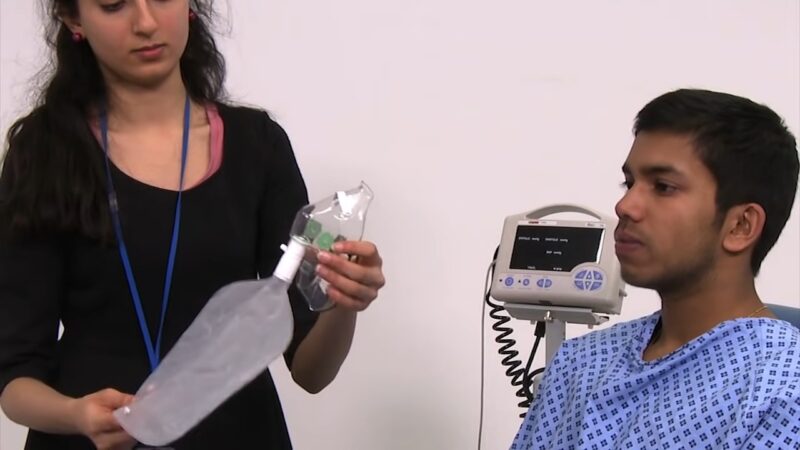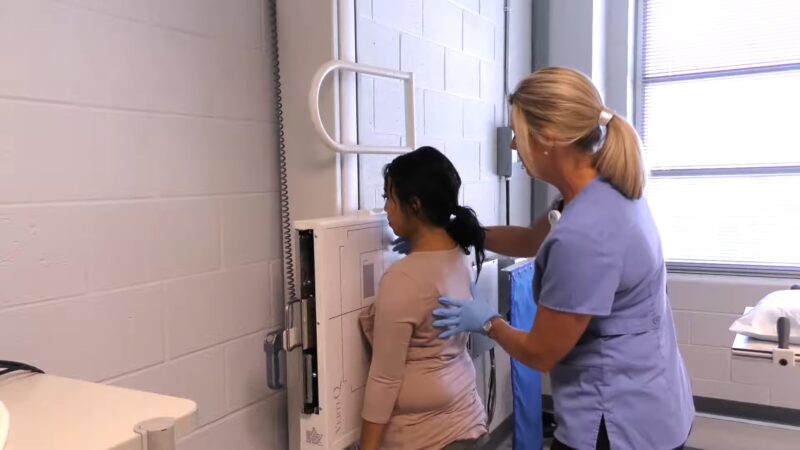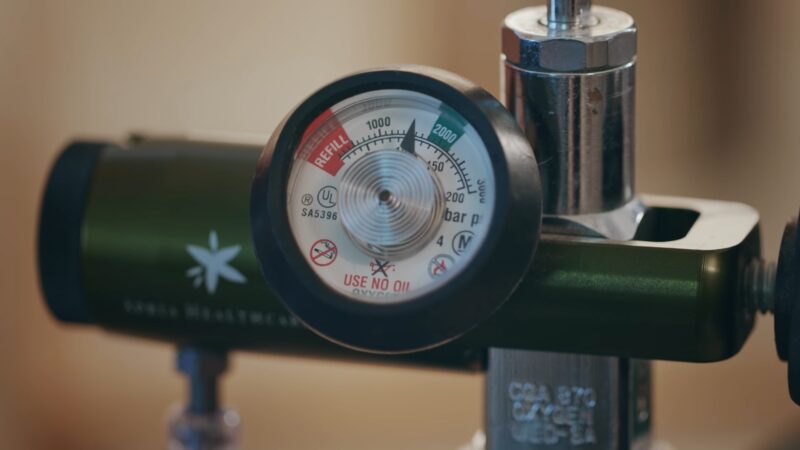Hypoxia and hypoxemia are two medical terms often used interchangeably, but they represent different physiological states. Both conditions relate to oxygen levels in the body, but they occur in different contexts.
This blog post aims to demystify these terms, providing a clear understanding of their differences, causes, symptoms, and treatment options. Hypoxia refers to a state where there is a lack of sufficient oxygen in the tissues to maintain normal physiological function.
On the other hand, hypoxemia refers to an abnormally low level of oxygen in the blood. Both conditions can be life-threatening if not promptly recognized and treated.

In the following sections, we will delve deeper into these conditions, exploring their causes, symptoms, and treatment options. We will also discuss the importance of understanding these terms for healthcare professionals and anyone interested in medical science.
What is Hypoxia?
Hypoxia is a condition characterized by insufficient oxygen supply at the tissue level. It can affect specific regions or the entire body. This lack of oxygen can lead to cell damage and eventually cell death, affecting the normal functioning of the body.
Different Variations
There are four primary categories of hypoxia: hypoxic, anemic, stagnant, and histotoxic. Each category is characterized by distinct causes and potential treatment strategies.
Hypoxic Hypoxia
As outlined in the scientific study published in 1994, hypoxic or hypoxemic hypoxia is a condition that arises when the partial pressure of oxygen in the blood decreases, typically to less than 40 mmHg. This reduction can lead to cerebral dysfunction and is a key factor in conditions where the effects of pure hypoxia on the brain are prominently observed. This can be due to a variety of reasons, such as:
- High altitudes: The concentration of oxygen in the air decreases with altitude, which can lead to hypoxic hypoxia.
- Respiratory conditions: Diseases like chronic obstructive pulmonary disease (COPD), asthma, and pneumonia can reduce the lungs’ ability to oxygenate the blood.
- Sleep apnea: This condition, characterized by repeated episodes of stopped or shallow breathing during sleep, can also lead to the condition.
Anemic Hypoxia
Anemic hypoxia occurs when the blood’s ability to carry oxygen is compromised. This can happen due to:
- Anemia: In this condition, there’s a deficiency of red blood cells or hemoglobin, the molecule that carries oxygen in the blood.
- Carbon monoxide poisoning: Carbon monoxide binds to hemoglobin more strongly than oxygen does, reducing the amount of oxygen that can be carried in the blood.
Stagnant Hypoxia
Stagnant or ischemic hypoxia occurs when there’s a decrease in blood flow to a particular area of the body. This can be due to:
- Heart disease: Conditions like heart failure or arrhythmias can reduce blood flow to the body’s tissues.
- Vascular disease: Conditions like peripheral artery disease or deep vein thrombosis can also reduce blood flow.
Histotoxic Hypoxia
Histotoxic hypoxia occurs when the body’s cells are unable to use the oxygen delivered to them. This can happen due to:
- Cyanide poisoning, as detailed in the chapter titled Nervous System in “An Introduction to Interdisciplinary Toxicology”, exerts its toxic effects by inhibiting cytochrome c oxidase. This action blocks the electron transport in the mitochondria, the cell’s powerhouses, ultimately preventing the utilization of oxygen. This leads to a condition known as histotoxic hypoxia.
- Certain medications or substances: Some drugs or substances can interfere with the cells’ ability to use oxygen.
Grasping the various types of hypoxia is vital for precise diagnosis and successful treatment. By identifying the distinct causes and possible treatment options for each type, healthcare professionals can enhance their ability to handle this condition, which could potentially be life-threatening.
What is Hypoxemia?

Hypoxemia is a condition characterized by abnormally low levels of oxygen in the blood. It’s important to note that while hypoxemia often leads to hypoxia, it’s possible to have hypoxemia without hypoxia if the body compensates for the low oxygen levels.
Drawing from the scientific paper Mechanisms of hypoxemia by Malay Sarkar et al, hypoxemia can be triggered by a range of conditions that lead to a ventilation/perfusion (V/Q) mismatch. This mismatch, characterized by a widened A-a oxygen gradient, can be effectively corrected with supplemental oxygen therapy.
Conditions that commonly cause hypoxemia due to V/Q mismatch encompass lung diseases such as asthma, COPD, bronchiectasis, cystic fibrosis, and interstitial lung diseases (ILDs), as well as pulmonary hypertension and certain heart conditions like heart failure. Sleep disorders like sleep apnea can also contribute to hypoxemia. It can also occur at high altitudes where the air contains less oxygen.
Symptoms of hypoxemia can be similar to those of hypoxia and may include shortness of breath, rapid breathing, confusion, and cyanosis.
Hypoxia vs Hypoxemia: Key Differences
Hypoxia and hypoxemia, although both related to oxygen levels within the body, have distinct definitions and contexts. Hypoxia is characterized by an oxygen deficiency at the tissue level, whereas hypoxemia is defined by low oxygen levels in the blood.The causes of these conditions can sometimes be similar, but there are crucial differences to note. Hypoxia can result from conditions that hinder the blood’s capacity to transport oxygen or the tissues’ ability to utilize it.
Conversely, hypoxemia is predominantly caused by conditions that impair the lungs’ ability to oxygenate the blood.
Causes

While hypoxia and hypoxemia are distinct conditions, they share some common causes, primarily related to respiratory and circulatory issues. However, each condition also has unique causes related to the specific physiological processes they affect.
Causes of Hypoxia
- Respiratory conditions: Diseases like chronic obstructive pulmonary disease (COPD), asthma, and pneumonia can reduce the lungs’ ability to oxygenate the blood, leading to hypoxia.
- Cardiovascular problems: Conditions like heart failure or arrhythmias can reduce blood flow to the body’s tissues, resulting in hypoxia.
- Anemia: This condition, characterized by a deficiency of red blood cells or hemoglobin, can reduce the blood’s ability to carry oxygen, leading to hypoxia.
- High altitudes: At high altitudes, the air contains less oxygen, which can lead to hypoxia.
Causes of Hypoxemia
- Respiratory conditions: Similar to hypoxia, diseases like COPD, asthma, and pneumonia can reduce the lungs’ ability to oxygenate the blood, leading to hypoxemia.
- Sleep apnea: This condition, characterized by repeated episodes of stopped or shallow breathing during sleep, can lead to hypoxemia.
- Pulmonary embolism: This condition, which involves a blockage in one of the pulmonary arteries in the lungs, can reduce the lungs’ ability to oxygenate the blood, leading to hypoxemia.
- High altitudes: Similar to hypoxia, at high altitudes, the air contains less oxygen, which can lead to hypoxemia.
Symptoms

Diagnosing
Diagnosing hypoxia and hypoxemia involves a combination of physical examination, patient history, and specific diagnostic tests. The process aims to identify the presence of low oxygen levels in the tissues or blood and determine the underlying cause.
Physical Examination and Patient History
The first step in diagnosing hypoxia or hypoxemia usually involves a physical examination and a detailed patient history. The healthcare provider may look for signs of low oxygen levels, such as shortness of breath, rapid breathing, or cyanosis (a bluish color of the skin, lips, or nails).
They may also ask about symptoms like confusion, dizziness, or fatigue. The patient’s medical history, including any known respiratory or cardiovascular conditions, can provide important clues about the potential cause of the symptoms.
Diagnostic Tests

Several diagnostic tests can help confirm a diagnosis of hypoxia or hypoxemia and identify the underlying cause:
- Pulse Oximetry: This non-invasive test measures the oxygen saturation of the blood. It involves placing a small device on the finger or earlobe that uses light to estimate the percentage of hemoglobin in the blood that is saturated with oxygen.
- Overnight Oximetry Test: This test monitors and records the levels of oxygen in your blood as you sleep, helping to detect conditions like sleep apnea that can lead to hypoxia or hypoxemia.
- Arterial Blood Gas (ABG) Test: This blood test measures the levels of oxygen and carbon dioxide in the blood, as well as the blood’s acidity (pH). It involves taking a blood sample from an artery, usually in the wrist.
- Chest X-ray or CT scan: These imaging tests can help identify any abnormalities in the lungs, such as pneumonia, COPD, or a pulmonary embolism, that could be causing hypoxia or hypoxemia.
Pulmonary Function Tests: These tests measure how well the lungs are working and can help diagnose conditions like asthma or COPD.
Prevention

Preventing hypoxia and hypoxemia primarily involves managing the risk factors and underlying conditions that can lead to these conditions. Here are some general strategies that can help reduce the risk:
Healthy Lifestyle Choices
Maintaining a healthy lifestyle can significantly reduce the risk of developing conditions that can lead to hypoxia or hypoxemia. This includes:
- Avoid smoking: Smoking can damage the lungs and reduce their ability to oxygenate the blood, increasing the risk of both hypoxia and hypoxemia.
- Maintain a healthy weight: Being overweight or obese can put extra pressure on the lungs and make it harder to breathe.
- Exercise regularly: Regular physical activity can help keep the heart and lungs healthy and improve their ability to deliver and use oxygen.
Manage Underlying Conditions
If you have a condition that can lead to hypoxia or hypoxemia, such as COPD, asthma, or heart disease, it’s important to manage it effectively:
- Follow your treatment plan: Take all medications as prescribed and follow any other treatment recommendations from your healthcare provider.
- Monitor your condition: Regular check-ups can help identify any changes in your condition early, allowing for adjustments in treatment if necessary.
Safety Precautions
Certain safety precautions can also help prevent hypoxia and hypoxemia:
- Be cautious at high altitudes: If you’re traveling to a high-altitude area, take time to acclimate to the lower oxygen levels, and consider using supplemental oxygen if necessary.
- Practice safe diving: If you’re a diver, follow safe diving practices to avoid decompression sickness, which can lead to hypoxia.
While it’s not always possible to prevent one of these conditions, these strategies can help reduce the risk and ensure that any potential causes are managed effectively.
Treatment

Treatment strategies for hypoxia and hypoxemia, while distinct, share common elements due to their related nature. Both conditions necessitate addressing the root cause and often involve supplemental oxygen, with specific treatments varying based on the cause and severity.
For hypoxia, the primary goal is to improve oxygen delivery to the tissues. This often involves supplemental oxygen, delivered via a mask or nasal cannula.
Medications like bronchodilators for COPD or asthma can aid in improving breathing and oxygenation. In certain cases, surgery may be required to address the root cause of hypoxia, such as heart defects or vascular blockages. Lifestyle modifications, like quitting smoking or losing weight, can also enhance oxygen levels.
Conversely, hypoxemia treatment focuses on improving blood oxygen levels. Supplemental oxygen is also commonly used, and medications may be prescribed based on the underlying condition, such as bronchodilators for asthma or antibiotics for pneumonia.
Devices like CPAP or BiPAP can assist in keeping airways open and improving oxygenation in conditions like sleep apnea. Similar lifestyle changes can also be beneficial. Recognizing these treatment strategies is crucial for effectively managing these potentially life-threatening conditions.
Summary
In this exploration of hypoxia and hypoxemia, we’ve highlighted the differences between these two conditions, both of which are related to oxygen levels in the body.
Hypoxia pertains to an insufficient supply of oxygen at the tissue level, while hypoxemia involves low oxygen levels in the blood. While they share similar symptoms, the causes and treatments of these conditions can vary significantly.
Hypoxia typically arises from issues with oxygen transport or utilization in tissues, whereas hypoxemia is primarily due to conditions that affect lung oxygenation.
The treatment strategies for both often involve addressing the underlying cause and may include supplemental oxygen. It’s crucial for healthcare professionals to recognize these distinctions to effectively manage these conditions, which can potentially be life-threatening.

